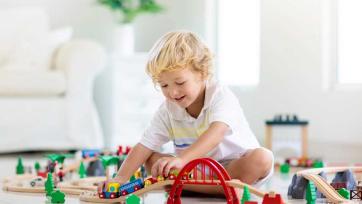As parents, we naturally want the best for our children. We hope kids prosper into healthy, fulfilled adults who are prepared for the future. But what do we do to help them develop these skills? One activity that has been shown to help with child development is play. The play has been shown to increase emotional intelligence, creativity, problem-solving abilities, social skills, and more. So why not incorporate more space into your family life? Read on for more suggestions on how to do this.

Sorting colourful objects with different shapes and sizes
Child development experts recommend various activities to help develop fine motor skills, cognitive skills, and social skills. Exercises focusing on sorting coloured objects with different shapes and sizes can benefit children. Sorting tasks help children develop their cognitive skills as they learn to identify similarities and differences between items. Additionally, sorting jobs may help children develop their social skills as they learn to interact with others and share their belongings.
To help ensure that your child enjoys sorting coloured objects, consider including a few fun challenges along the way. For example, have them try to sort the items into categories using only their eyes or noses. Alternatively, have them race one another to complete the task first. By incorporating a little humour and challenge into the activity, you can make it more enjoyable for your child.
Finding and hiding items
When it comes to child development, many things can be done to help ensure that your toddler is growing and developing optimally. Some activities that may be helpful include: playing with your toddler, reading to them, singing with them, playing outside, and spending time with family and friends. It is essential to find out what works best for your child and to continue doing activities that make them happy.
Identifying sounds or pictures
Many activities have been found to help with child development. These include reading to your child, playing games together, going for walks, and doing art projects. Reading to your child can help them learn how to read and be fun. Games are a great way to keep your children entertained and learning simultaneously. Going for walks can help improve their muscles and get them exercise. Art projects can teach children about different subjects, such as math or geography.
Arts and crafts activities
Arts and crafts activities can help with child development. They can encourage creativity, provide exercise, and promote socialization. Additionally, arts and crafts can help children learn basic skills such as problem-solving, patience, and dexterity. Discover an art or craft project that the whole family can get into from the many available.
Some popular arts and crafts activities include painting, sculpting, quilting, pottery play, woodworking, and sewing. Make sure to select an age-appropriate move for your child; some activities may be too difficult for younger children or too easy for older ones. Some families also enjoy combining different types of arts and crafts activities; for example, painting a mural while quilting a girly dress at the same time.
If your child is new to art or crafting projects, start with more explicit materials such as markers or crayons. As he becomes more proficient at the activity, you can move on to more challenging materials like paint or clay. In addition to traditional arts and crafts supplies like paints or clays, you can also use glitter or beads to add extra fun and excitement to your projects.
Singalongs
Singalongs are a great way to encourage your children's development and to help them learn new songs. Here are some ways to ensure that family singalongs are pleasant for everyone:
1. Choose familiar songs that your children know well. This will reduce the amount of effort required from them and make the singing experience more pleasurable for them.
2. Make sure that all family members participate in the singalong, as this will help promote social interaction amongst the family members.
3. Set a timer and have everyone start singing immediately after the timer goes off. This will ensure everyone finishes their part on time without rushing or bickering!








